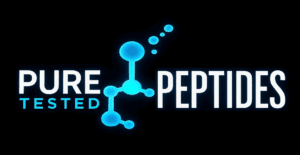5-Amino-1MQ Research Overview & Where to Buy Peptides Online (Research-Only)
This page summarizes laboratory literature on 5-Amino-1MQ, a small-molecule NNMT (nicotinamide-N-methyltransferase) inhibitor explored in preclinical metabolism and adipocyte studies. It is presented for research use only and is not a medical claim or guidance.
Why 5-Amino-1MQ matters in redox & metabolism experimentsNNMT catalyzes the methylation of nicotinamide (NAM) to produce 1-methylnicotinamide (1-MNA), consuming S-adenosyl-methionine (SAM) and generating S-adenosyl-homocysteine (SAH). In models where NNMT activity is high, cells may divert NAM away from the NAD+ salvage pathway (NAM → NMN via NAMPT → NAD+), potentially lowering the availability of NAD+ for sirtuins and PARPs. By inhibiting NNMT, 5-Amino-1MQ is studied as a tool to:
|
 |
Mechanism: NNMT Inhibition → NAM Salvage → NAD+-Linked Signaling
At the core, 5-Amino-1MQ competitively inhibits NNMT. When NNMT activity drops, NAM is less frequently methylated into 1-MNA and can instead be routed into the NAMPT-dependent salvage pathway that regenerates NAD+. Increased NAD+ availability can, in turn, support sirtuin deacetylases (e.g., SIRT1/SIRT3) and influence PARP-mediated repair, tying NNMT inhibition to chromatin, mitochondrial enzyme acetylation state, and DNA-damage responses.
In adipocyte and hepatocyte models, this mechanism is frequently read out via NAD+/NADH ratios, acetyl-lysine footprints on metabolic enzymes, mitochondrial respiration (OCR), and transcriptional signatures (AMPK–PGC-1α, fatty-acid oxidation, UCPs). Because methyl-donor flux is involved, researchers may also quantify SAM/SAH, 1-MNA, and related methylome endpoints.
What preclinical data generally report
While specific results vary by model, dosing, and readouts, multiple preclinical studies report that NNMT inhibition can shift adipocyte energetics toward a more oxidative phenotype. Typical observations include reduced adipocyte size in diet-induced models, higher NAD+ pools, increased mitochondrial markers, and favorable changes in lipid handling. These outcomes are hypothesis-generating and model-dependent; they motivate continued investigation of methyl-donor economy, NAD+ salvage, and mitochondrial control in metabolic research.
Importantly, any translation beyond benchtop contexts remains an open research question. Dose, delivery matrix, and tissue specificity can substantially shift findings. We recommend pairing 5-Amino-1MQ with multi-omic panels—metabolites, epigenetic marks, and respiration—to produce a richer causal picture.
Related research tools: mitochondria & energy balance
 |
Ipamorelin 10 mg
|
MOTS-c 10 mgSlug validated: A mitochondrial-encoded peptide investigated for AMPK-linked metabolic reprogramming and exercise-responsive signals. Because 5-Amino-1MQ influences NAD+ salvage, pairing MOTS-c can help clarify cross-talk among AMPK, sirtuins, and downstream transcriptional programs (e.g., PGC-1α, NRF1). |
 |
 |
SLU-PP-332Slug validated: A tool compound characterized as an ERR agonist with “exercise-mimetic” transcriptional effects in preclinical experiments. When studied with 5-Amino-1MQ, researchers often profile fatty-acid oxidation, mitochondrial gene sets, and acetylproteomics to differentiate NAD+ salvage effects from nuclear receptor program activation. |
Popular product highlight: GLP3 online
In incretin-focused experiments, triple-agonist GLP-3 research compounds engage GLP-1R, GIPR, and GCGR—networks tightly coupled to hepatic lipid flux, adipocyte signaling, and skeletal-muscle substrate use. Because 5-Amino-1MQ touches NAD+ salvage, running the two in parallel (separate arms) can reveal whether metabolic outcomes stem primarily from endocrine signaling or redox/epigenetic modulation.
Designing rigorous experiments with 5-Amino-1MQ
|
 |
How this fits into your catalog workflow
Researchers often position 5-Amino-1MQ within a broader metabolic methods panel: an NNMT inhibitor for methyl-donor/NAD+ salvage, a mitochondrial peptide like MOTS-c for AMPK-linked stress signals, an exercise-mimetic such as SLU-PP-332 for nuclear receptor activation, and a GH-axis control arm using Ipamorelin. That factorial approach can separate endocrine from redox/epigenetic causes of any observed shift in lipid handling or mitochondrial capacity.
To browse additional research compounds and reference testing information, visit:
All Peptides for Sale or the
Pure Tested Peptides homepage.
All compounds discussed here—including 5-Amino-1MQ, Ipamorelin, MOTS-c, SLU-PP-332, and GLP3—are supplied for laboratory research and analytical purposes only. They are not for human consumption, medical, or veterinary use. No statement on this page is a claim of therapeutic benefit. Please review all applicable regulations prior to ordering or handling any research chemicals.
